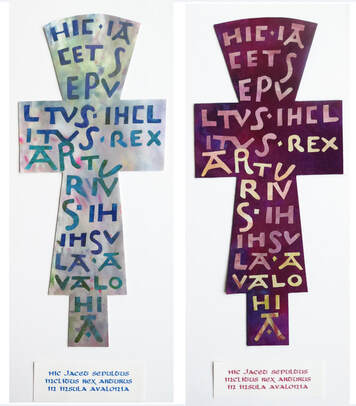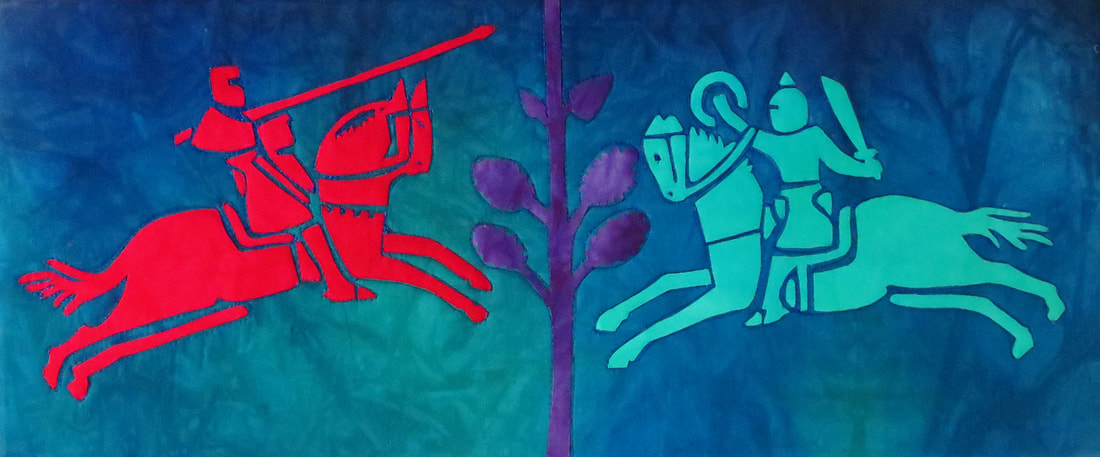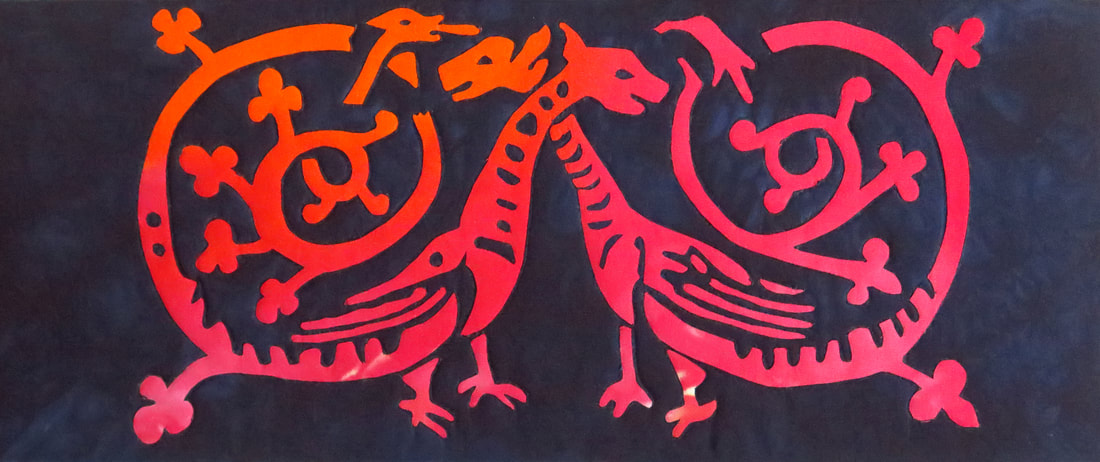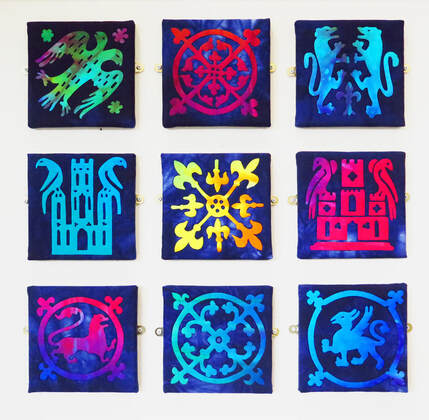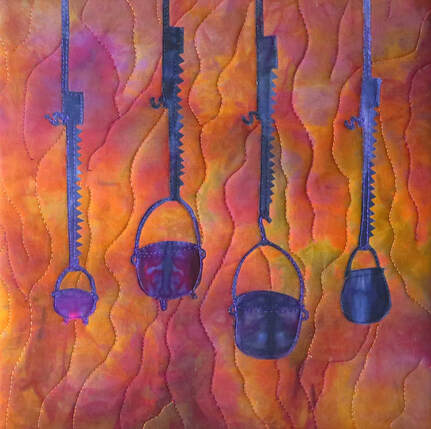Glastonbury Abbey
In 2017 Glastonbury Abbey invited three artists to create an exhibition in their gallery space. The other two artists worked in ceramics and mosaic, and with my textiles, we complemented and set off each other. We took our inspiration from the Abbey itself and from the many artefacts that were found in their magnificent ruins.
Glastonbury Abbey was founded in the 7th century, enlarged in the 10th, destroyed by a major fire in 1184, and rebuilt afterwards. In the 14th century it was one of the richest and most powerful abbeys in England. Sections of it were reduced to rubble during the destruction of the monasteries by King Henry VIII, but large sections remained upright.
From the 12th century it has been associated with the legend of King Arthur, an idea promoted by the monks who stated that Glastonbury was Avalon, and claimed to have found the grave of Arthur and Guinevere in the Abbey grounds. Other legends claim the abbey was founded by Joseph of Arimathea.
Whatever the truth, the influx of pilgrims helped raise funds to rebuild the abbey after the fire. Large numbers of people have continued to visit and admire it since then. The ruins, set in large beautiful grounds, have been studied by archaeologists and are well maintained.
From the 12th century it has been associated with the legend of King Arthur, an idea promoted by the monks who stated that Glastonbury was Avalon, and claimed to have found the grave of Arthur and Guinevere in the Abbey grounds. Other legends claim the abbey was founded by Joseph of Arimathea.
Whatever the truth, the influx of pilgrims helped raise funds to rebuild the abbey after the fire. Large numbers of people have continued to visit and admire it since then. The ruins, set in large beautiful grounds, have been studied by archaeologists and are well maintained.

